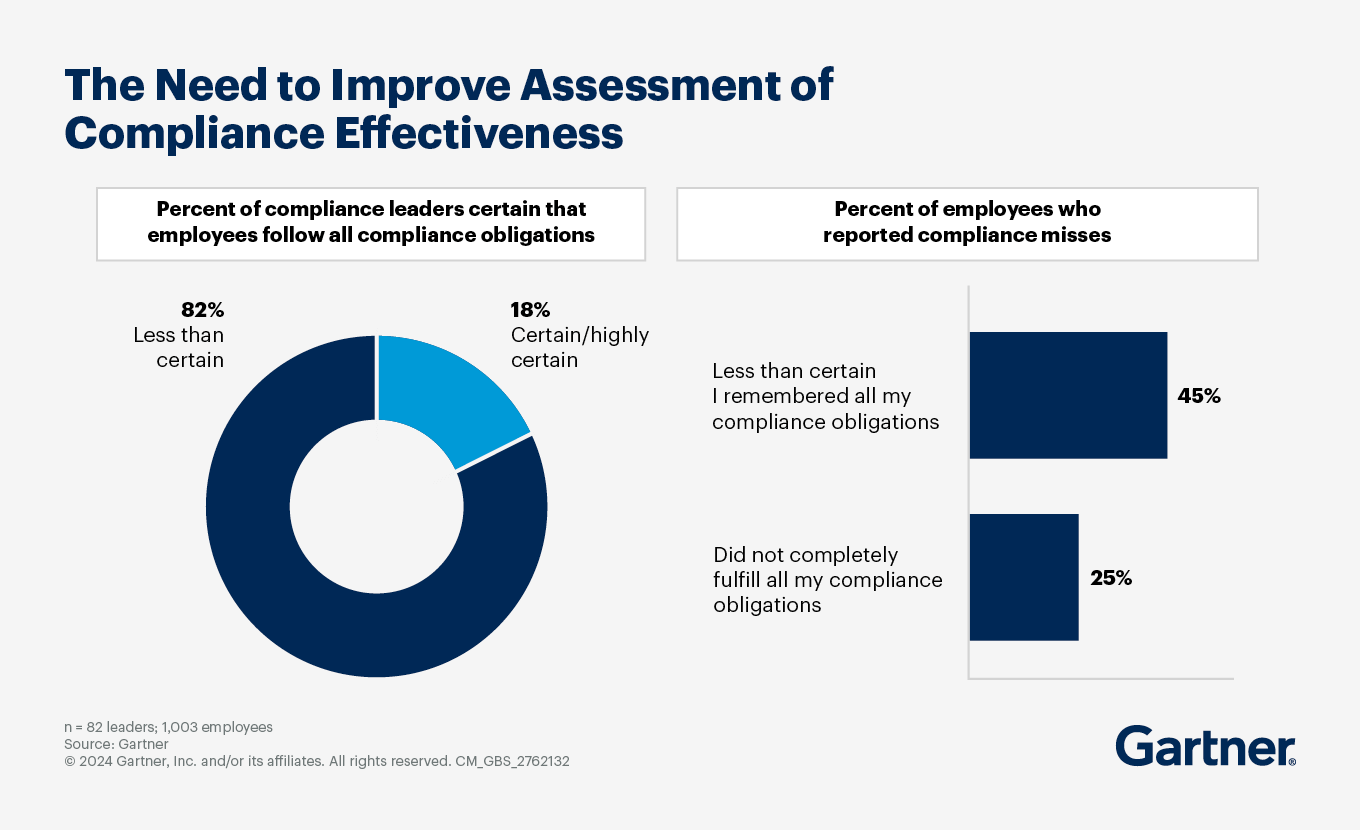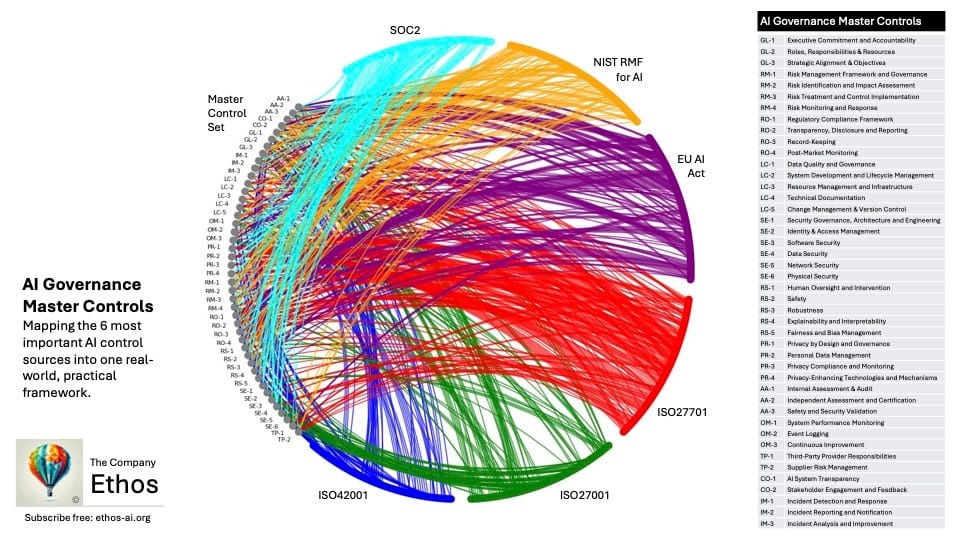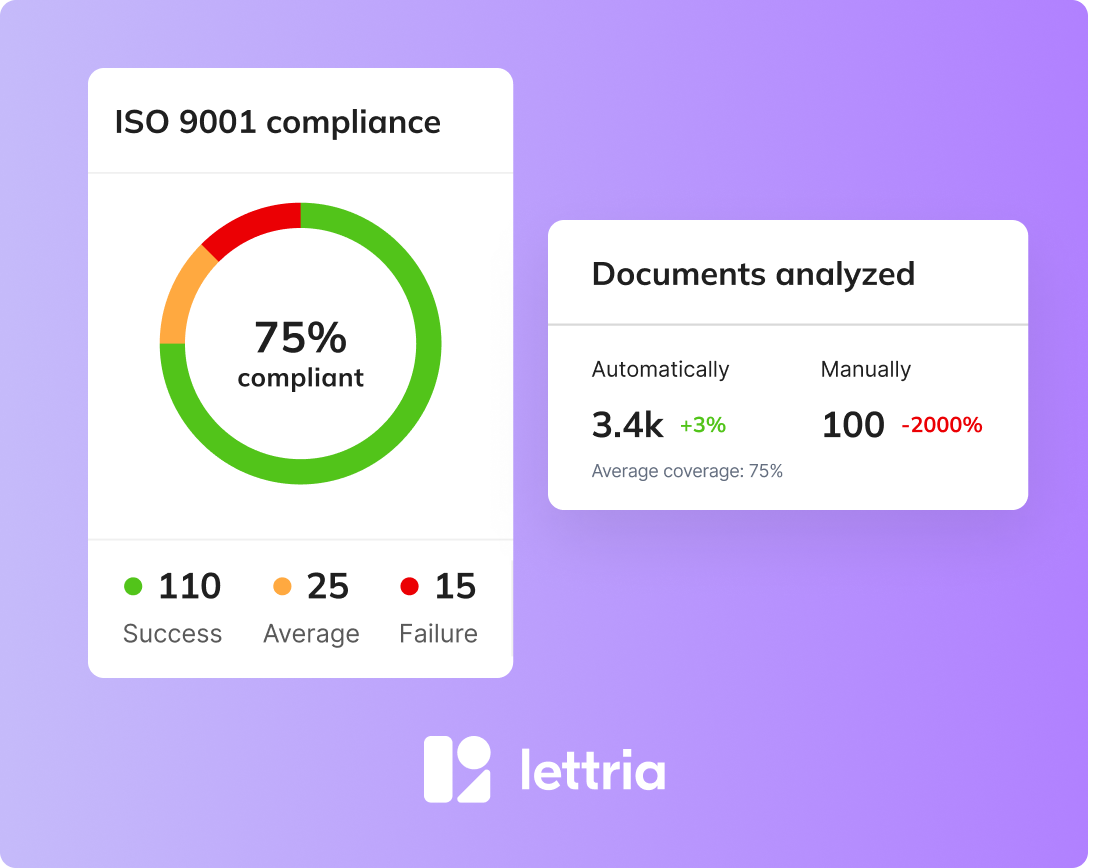7 min
Real security takes time, and real compliance needs real controls.
Compliance management tools, little-known less than a decade ago, according to a 2025 PwC report, today return an average ROI of 210% from avoided fines, operational costs, and deal readiness.
Getting it right with your software selection means long-term technical confidence. Think of it as sitting on a goldmine.
A verifiable compliance program with controls and evidence means that you can stand behind it, today and in every audit cycle up ahead.
But finding a reliable match that can integrate easily into your existing software stack typically requires a lot of box ticking.
If you've been thinking hard about what regulatory compliance software can help you continuously offer coverage while minimizing the IT and risk overheads, this guide is for you.
Ahead, we'll guide you on headaches to avoid before integration, three points to press when negotiating budgets, and 11 relevant players in the agentic AI space who can help streamline your gap analysis.
How to choose compliance software that offers the best AI tech for your regulatory workflows?
At last month's Forbes Technology Council, CTO Tanya Mitchell advised to "treat compliance as a design principle, not an afterthought."
By keeping this gold standard "compliance-by-design" strategy in mind, you should start by mapping out what non-negotiables you need in your compliance risk assessment tool.
And with a recent Capgemini World Quality 2024–2025 report pointing out that AI-driven control testing "reduced maintenance effort by up to 70% and improved automation stability by nearly 50%," it has never been a better time to be choosy.
Depending on what regulatory requirements you have to satisfy, you'll need to look at how your next tool maps to relevant established frameworks, its automation capabilities, and of course, tool comparisons (we'll cover more of that next).
Here is a sample overview compliance tool framework, to show you how you can best weigh up and zone in on what you need.
Above is an example of deciding how your an AI compliance tool can integrate into your existing infrastructure.
What common pitfalls do you need to avoid when selecting the best tool?
Next, you need to zero in on what to avoid.
Requests come from everyone, regulations update constantly, and it's hard to resist the urge to be swayed by buzzy demands.
There are three pointers we've found that solve for this head-on:
- Avoid misalignment between your company's compliance strategy and technical architecture. Keep coordination tight. Investing in a tool that doesn’t match your risk priorities leads to irrelevant alerts and wasted effort.
- Avoid poor-quality or siloed datasets, which undermine the reliability and integrity of your overall compliance analytics and risk assessment Inconsistent data from different departments causes inaccurate risk reports and missed compliance issues.
- Avoid underestimating training and change management investment with your team, as data shows it is the most common reason even technically capable compliance programs stall.
The last point drives home how you need to educate on the why behind your choice. Gartner research shows that employees who "understand and prioritize compliance are 63% more likely to fulfill their compliance obligations."
Don’t underestimate how guidance on why compliance is a priority will help with understanding and smooth adoption.

How to secure internal approvals for purchasing AI compliance tools
How do you demonstrate the highest impact possible to secure the infamous go-ahead from your procurement teams?
Here are relevant things you need to share in your report:
- Evidence-based ROI calculations that include lower reliance on manual processes, the cost of non-compliance like fines, penalties, and sanctions.
- Breach impact statistics tied to fragmented compliance tooling are your friend. Cite helpful data like Forrester's Predictions 2025 blog, which states that "breach-related class-action costs will surpass regulatory fines by 50% in 2025."
- AI framework efficiency that shares how regulatory compliance tool adoption can "reduce manual workloads by 50%," as shared in a 2025 ScienceLogic report, is an acute metric to share.

It also will help your argument, to share how audits will be simplified and contain traceable, explainable data flows, sans the invariably technical jargon, that puzzle procurement teams.
Lead with irrefutable evidence on future business outcomes for the best results.
11 noteworthy AI compliance tool players to review
Explore what worthy features and tools in this space are standing out, and if their typical use cases are a fit for your needs.
1: Lettria (Knowledge Studio)
Lettria turns complex compliance documents into dynamic knowledge graphs that genuinely speed up and improve compliance decision-making for enterprises by making the data within documents accessible, structured, and intelligent.
How it works: This tool compares your documents (RFPs, tech specs) to external regulations like ISO norms, IT guidelines, and policies by processing multi-format texts, building ontologies, and generating text-to-graph data. It powers precise regulatory workflows by orchestrating graph-based retrieval-augmented generation (GraphRAG), helping reduce AI hallucinations and streamline compliance tasks.
It is a match if you spend hours or weeks manually reviewing your internal documents against external regulations using Excel files or first-generation SaaS, and if you feel overwhelmed by the massive volume of inputs from evolving regulations. This tool helps by automatically scanning and understanding compliance-related documents to extract key intel, improves your audit quality with AI-generated explainable summaries, and easily integrates these insights into your enterprise workflows.
Typical use case: Enterprises who want to generate and share documents (RFPs, guidelines, terms and conditions) that strictly adhere to both external policies and their own in-house guidelines. Best for ensuring automated workflows, audit-ready records, and real-time updates on evolving regulations so you can dually support technical knowledge and informed decision-making.

2: MetricStream
MetricStream offers AI-powered governance, risk management, and compliance (GRC) solutions that help you simplify complex workflows.
How it works: The platform automates audits, third-party risk management, and policy enforcement for real-time updates.
It is a match if you want continuous regulatory tracking and scenario-based risk assessments to strengthen your audit prep, and you don't mind a complex tool setup.
Typical use case: You need to manage multiple regulatory mandates—like NAIC, FINRA, SEC, and FDIC—in one platform.
3: Navex Global
Navex integrates ethical compliance, cyber risk, and workforce policy management into one unified platform.
How it works: It automates vendor risk assessments, delivers targeted training, and manages ethics hotlines.
It is a match if you want to improve cyber risk oversight with employee compliance awareness, and to make sure your policy enforcement in a sensitive industry is respected.
Typical use case: You want to reduce compliance breaches with a heavy focus on employee training and automated risk monitoring.
4: SAI360
SAI360's GRC platform focuses on tracking regulatory changes, managing disclosures and training, as well as investigating incidents via a hotline and online reporting tool.
How it works: Six modules in this platform focus on compliance triggers like disclosure and resolution, ethics and compliance, and incident management, to name a few.
It is a match if you want to hone in on vendor and supply chain risks while keeping a holistic view on all incident types for your compliance management.
Typical use case: You are a large retail group looking to flag employee concerns and mitigate breach risks in your external operations.
5: Compliance.ai
Compliance.ai, recently acquired by Archer (see number 11) in 2024, tracks and interprets fast-changing regulatory changes in one platform.
How it works: The platform offers AI-enhanced compliance system management that shares analysis and scans of regulatory updates in real-time.
It is a match if you prefer a personalized and visual overview of your linked compliance issues so you can focus on relevant updates.
Typical use case: Financial institutions that want to reduce regulatory research time and mitigate compliance risks.
6: OneTrust
OneTrust helps customers keep tabs on evolving privacy regulations and manage privacy and consent with its AI governance solutions.
How it works: OneTrust applies AI to automate data subject requests, third-party risk assessments, and compliance workflows for GDPR, CCPA, among others.
It is a match if you want to manage data you collect responsibly across customers, employees, and third parties, while still maintaining continuous privacy compliance.
Typical use case: If you are a governance team who wants to reduce painful bottlenecks and accelerate privacy impact assessments, this is the tool for you.
7: LogicGate
LogicGate prides itself on offering a connected GRC platform that handles compliance workflow automation without code.
How it works: The platform offers several GRC applications adaptable to data privacy, internal audits, regulatory compliance, and controls compliance.
It is a match if you want a tool that integrates into your stack, including JIRA, Black Kite, ServiceNow, Amazon S3, Confluence, and many more.
Typical use case: Mid-sized companies with a financial background who want to self-serve, accelerating their compliance maturity without the hassle of coding or developer intervention.
8: Resolver
Resolver is an experienced centralized compliance tool that offers a no-frills, framework-focused tool.
How it works: It offers incident management, audit tracking, risk dashboards, and third-party risk modules that promise to focus only on your requirements.
It is a match if you want to focus on accurate executive reporting that combines AI summaries and AI tech to spot overlapping requirements.
Typical use case: Enterprises who like clear ownership and control-focused tech, with solid incident response and compliance monitoring capabilities.
Honorable mentions
9: Convercent
Convercent, recently acquired by German-backed EQS and previously owned by OneTrust, focuses on ethics-driven compliance, incident reporting, and program health.
How it works: The platform integrates whistleblower hotlines, policy enforcement, and third-party risk with detailed compliance dashboards.
It is a match if you want to focus on corporate responsibility without fuss, and don't mind shifting between EQS and OneTrust product functionalities and sites on this platform.
Typical use case: Mid-sized companies who prefer broader case management tools for their ethical compliance initiatives.
10: NAVEX IRM
NAVEX IRM centralizes risk and compliance activities with AI analytics and automation.
How it works: The cloud platform offers policy management, vendor risk workflows, automated compliance reporting, and more in an IRM tool that lets you link to broader risk management activities.
It is a match if you want to streamline risk reporting across disparate sources, and don't mind a less intuitive interface that requires intense customization at the beginning.
Typical use case: Mid-to-large organizations in health and safety management who want to improve compliance efficiency.
11: Archer Evolv™
Archer Evolv™ is a newly launched GRC tool within the Archer brand that combines risk, compliance, audits, regulatory intelligence, and third-party management features enhanced by AI.
How it works: This AI tool, hosted within a cloud platform, inputs your risk and compliance data into a single dashboard to combat compliance sprawl.
It is a match if you want granular control over governance and compliance for scaled, established companies, and you have resources to wrestle with a steep setup process.
Typical use case: Large enterprises who want an AI GRC—focused compliance tool to mix both granularity and scale for complex compliance needs.
Wrapping up
If you want to arm yourself with the best fit agentic AI compliance tool, the key is to find out what non-negotiable requirements you have, cross reference them with your compliance vulnerabilities and match with a vendor that ticks your technical requirements.
With Lettria Knowledge Studio you can ensure that the massive volume of unstructured data your enterprise produces stays compliant with relevant regulations and internal policies by automatically scanning and extracting key insights. You can focus on the right data without getting lost in endless documents and manual reviews.
And if you’re curious about the wider benefits of AI-powered ontology modeling, check out our advanced parsing techniques walkthrough guide.
Frequently Asked Questions
Yes. Lettria’s platform including Perseus is API-first, so we support over 50 native connectors and workflow automation tools (like Power Automate, web hooks etc,). We provide the speedy embedding of document intelligence into current compliance, audit, and risk management systems without disrupting existing processes or requiring extensive IT overhaul.
It dramatically reduces time spent on manual document parsing and risk identification by automating ontology building and semantic reasoning across large document sets. It can process an entire RFP answer in a few seconds, highlighting all compliant and non-compliant sections against one or multiple regulations, guidelines, or policies. This helps you quickly identify risks and ensure full compliance without manual review delays.
Lettria focuses on document intelligence for compliance, one of the hardest and most complex untapped challenges in the field. To tackle this, Lettria uses a unique graph-based text-to-graph generation model that is 30% more accurate and runs 400x faster than popular LLMs for parsing complex, multimodal compliance documents. It preserves document layout features like tables and diagrams as well as semantic relationships, enabling precise extraction and understanding of compliance content.


.png)

.png)
.jpg)
.jpg)
.jpg)